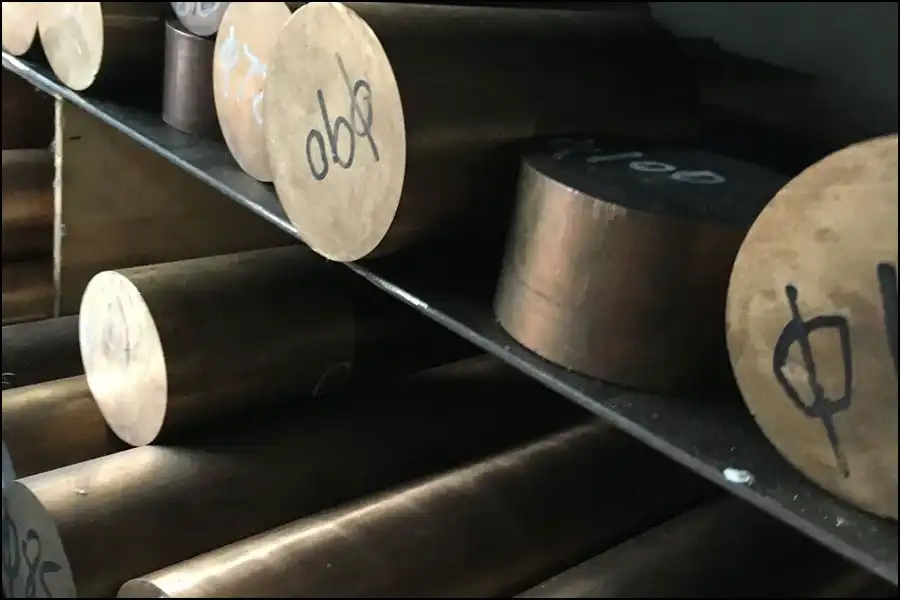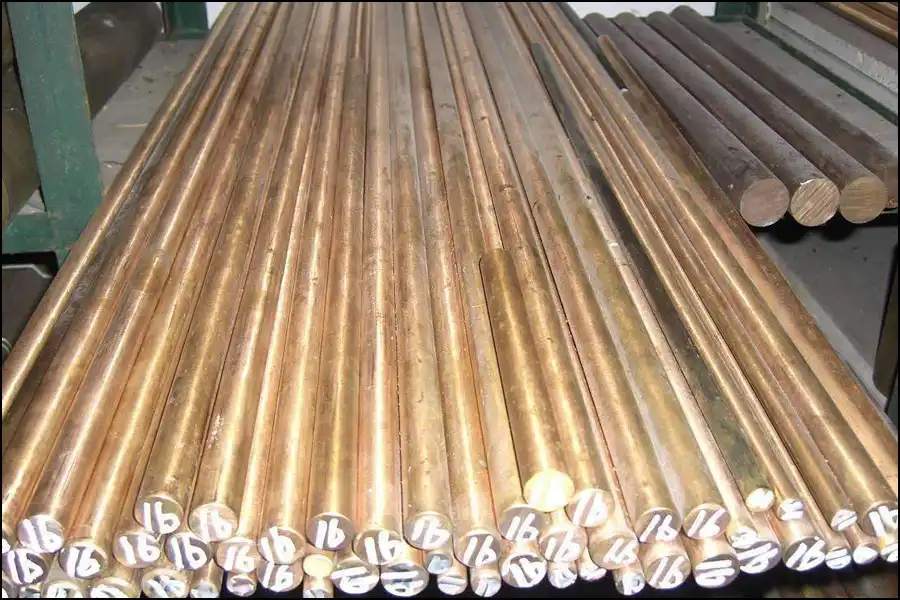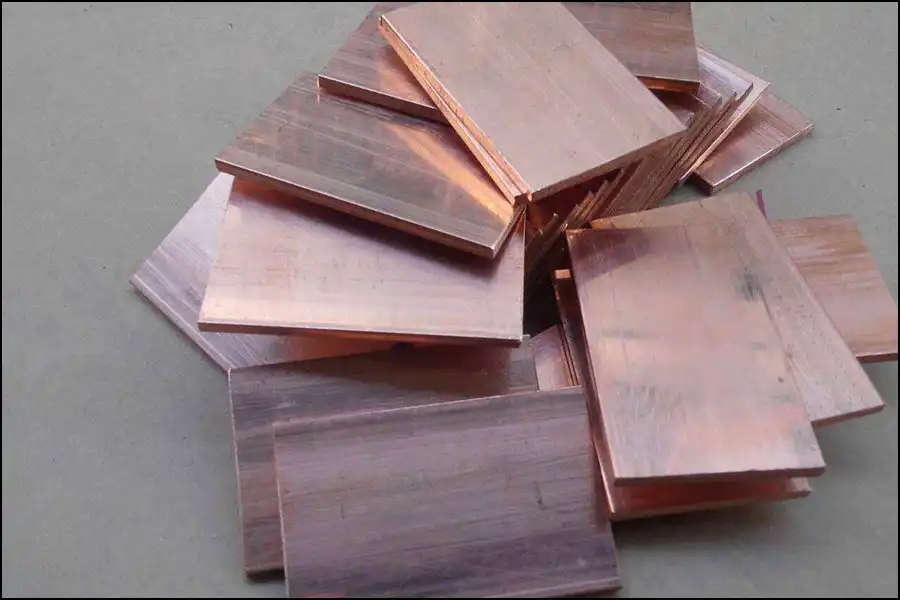UNS.C17300 Leaded Beryllium Copper
Cube2Pb--C17300 (CDA 173) The Leaded Beryllium Copper is identical to a version of lead-containing alloy C17200 and achieves the same exceptional strength after hardening. C17300 rods contain a small amount of lead to provide an alloy tailored for automatic machining operations and the Lead promotes formation of finely divided chips thus extending cutting tool life.
The performance of C17300 high-strength beryllium bronze is equivalent to C17200. But C17300 contains 0.2%-0.6% of lead, which increases the alloy's cutting coefficient from 20% to 50% (100% for free-cutting brass), which greatly improves the machining performance of the alloy and better adaptability Precision requirements for precision parts. C17300 free-cutting beryllium bronze has good processing performance, high thermal conductivity, weldability, corrosion resistance, polishability, wear resistance, adhesion resistance, and can be forged into various shapes of parts, and its strength and wear resistance ratio Chromium-zirconium copper alloy has better physical properties and is used in medium-strength and high-conductivity parts, such as: fuse fasteners, springs, connectors, resistance spot welding heads, seam welding rollers, die-casting machine die heads, plastic molding dies, Probes, coaxial connectors, photomultiplier tubes, high-precision instruments, military aerospace, etc.
Typical Application for CuBe2Pb- C17300 Leaded Beryllium Copper Alloys
C17300 free-cutting beryllium bronze has good processing performance, high thermal conductivity, weldability, corrosion resistance, polishability, wear resistance, adhesion resistance, and can be forged into various shapes of parts, and its strength and wear resistance ratio Chromium-zirconium copper alloy has better physical properties and is used in medium-strength and high-conductivity parts, such as: fuse fasteners, springs, connectors, resistance spot welding heads, seam welding rollers, die-casting machine die heads, plastic molding dies, Probes, coaxial connectors, photomultiplier tubes, high-precision instruments, military aerospace, etc.
Special Application Of C17300
When used as an insert in a plastic mold, C17300 free-cutting beryllium bronze can effectively reduce the temperature of the heat concentration zone and simplify or eliminate the design of cooling water channels. The excellent thermal conductivity of beryllium bronze is about 3-4 times better than that of mold steel. This feature can ensure rapid and uniform cooling of plastic products, reduce product deformation, unclear appearance details and similar defects. In most cases, it can be significantly Shorten the production cycle of products. Therefore, beryllium cobalt copper can be widely used in:
C17300 Chemical Composition
Executive standard:ASTM/GB/T5233-2001/EN12163(%max., unless shown as range or min.)
| Numbering | Be | Co+Ni | Cu | Fe | Pb | Si | Al |
|---|---|---|---|---|---|---|---|
| C17300 | 1.8-2.0 | Co+Ni≥0.2 | Margin | 0.15 | 0.2-0.6 | 0.15 | 0.15 |
Mechanical properties and conductivity analysis
(AT/TF00)
| Status | Tensile Strength/MPa | Yield Strength/MPa | Rockwell Hardness/B | Elongation/4*DA min% | Conductivity/%IACS | ||
|---|---|---|---|---|---|---|---|
| A(TB00) | Solution heat treatment state | 410-590 | 410-590 | 140 | B 45-85 | 20 | — |
| H(TD04) | Hard state | Diameter less than 10mm | 620-900 | 520 | B 88-103 | 8 | >17 |
| H(TD04) | Hard state | 10-25mm in diameter | 620-860 | 520 | B 88-102 | 8 | >17 |
| H(TD04) | Hard state | 25-75mm diameter | 590-830 | 520 | B 88-101 | 8 | >17 |
| AT(TF00) | Precipitation heat treatment | 1140-1380 | 1140-1380 | 1000 | C 36-42 | 4 | —— |
| HT(TH04) | Hard and precipitation heat treatment | 1140-1380 | 1140-1380 | 1070 | C 38-44 | 2 | >22 |
Available Status
| Brush Name | ASTM Name | Description |
|---|---|---|
| A | TB00 | Solution annealing state (quenched state) |
| ½H | TD01 | Quarter hard |
| ½H | TD02 | Half hard (semi-hard) |
| ¾H | TD03 | Three-quarters hard |
| H | TD04 | Hard state (full hard) |
| AT | TF00 | Standard aging heat treatment in quenched state |
| ¼HT | TH01 | Quarter hard standard aging heat treatment |
| ½HT | TH02 | Half-hard standard aging heat treatment |
| ¾HT | TH03 | Three-quarters hard standard aging heat treatment |
| HT | TH04 | Hard standard aging heat treatment (a process of comprehensive strengthening of deformation and aging) |
Note: In the Brush name:
- "A" represents the state of solution annealing (annealed, the alloy is in the softest state, easy to be stamped and formed, and needs to be cold worked or strengthened during the direct failure period);
- "H" stands for cold processing state (hard);
- "T" means that the material has been aging hardened by standard heat treatment (heat treatment means the state of aging strengthening heat treatment).



